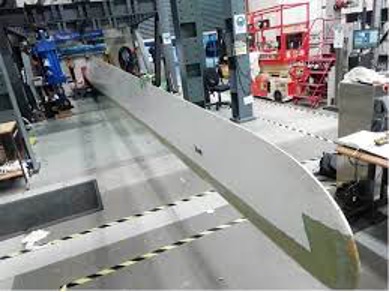
SPOTBlade

- Title
-
SPOTBlade – Strategies for erosion and fouling Protection of Offshore Turbine Blades
- Start Date
-
1-4-2021
- End Date
-
31-3-2024
- Funding Body
-
Sustainable Energy Authority of Ireland: National Energy Research Development and Demonstration (RD&D) Funding Programme 2021
- Coordinator
-
University of Limerick (UL)
- Project Partners
-
Institute of Technology Carlow (ITC)
National University of
Ireland Galway (NUIG)
TU Dublin (TUD)
ÉireComposites Teo
- Principal Investigators
- Research Area
Introduction
Lowering maintenance costs and increasing operational efficiency are primary challenges for the wind industry. A major cause of damage to wind turbine blades is erosion by repeated impacts of water droplets (IEA Wind Task 46). Such damage results in a loss of energy generation, caused by changes to the aerodynamic profile of the blade’s leading edge. It has been estimated that the loss in annual energy production is between ~5% (small amounts of erosion) and ~25% (moderate-to-heavy erosion). Additionally, operators incur maintenance costs and loss of productivity during repair shutdowns. Proprietary leading-edge protection (LEP) tapes and coatings have been developed in recent years. However, replacing these tapes or repairing LEP coatings is problematic, and operators seek alternatives. Blade manufacturers are also pursuing more durable permanent solutions. The damage mechanism is a complex process, involving time-dependent interactions between the impinging water droplet, the surface topography and the blade material properties. In the SPOTBlade project, state-of-the-art test facilities will be employed to study the mechanisms responsible for damage initiation and erosion propagation. LEP systems (commercially available and several under development) and repair schemes will be evaluated using two rain erosion testing approaches. A related problem concerns biofouling and contamination of blades – commercially-available coating systems will be modified and experimentally evaluated. Material characterisations will be undertaken to generate new data for damage modelling and to correlate to rain erosion tests. In parallel, modelling, using a novel hybrid approach, of the impact of climatic parameters and material coatings on blade erosion will be undertaken.
Aim
The overarching aim of the research is to assess available LEP and repair materials in order to assist wind farm operators in their decision making on adopting such materials.
Work Packages
- Project Management
- Leading Edge Erosion Mechanisms
- Coatings, Repair and Damage Mitigation
- Biofouling/Anti-Contamination Coatings
- Erosion Modelling and Prediction for Erosion Safe Operations
- Manufacture of a wind blade demonstrator
- Communications and Dissemination




